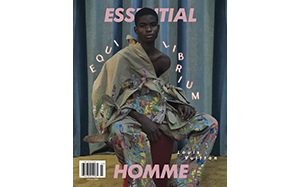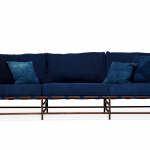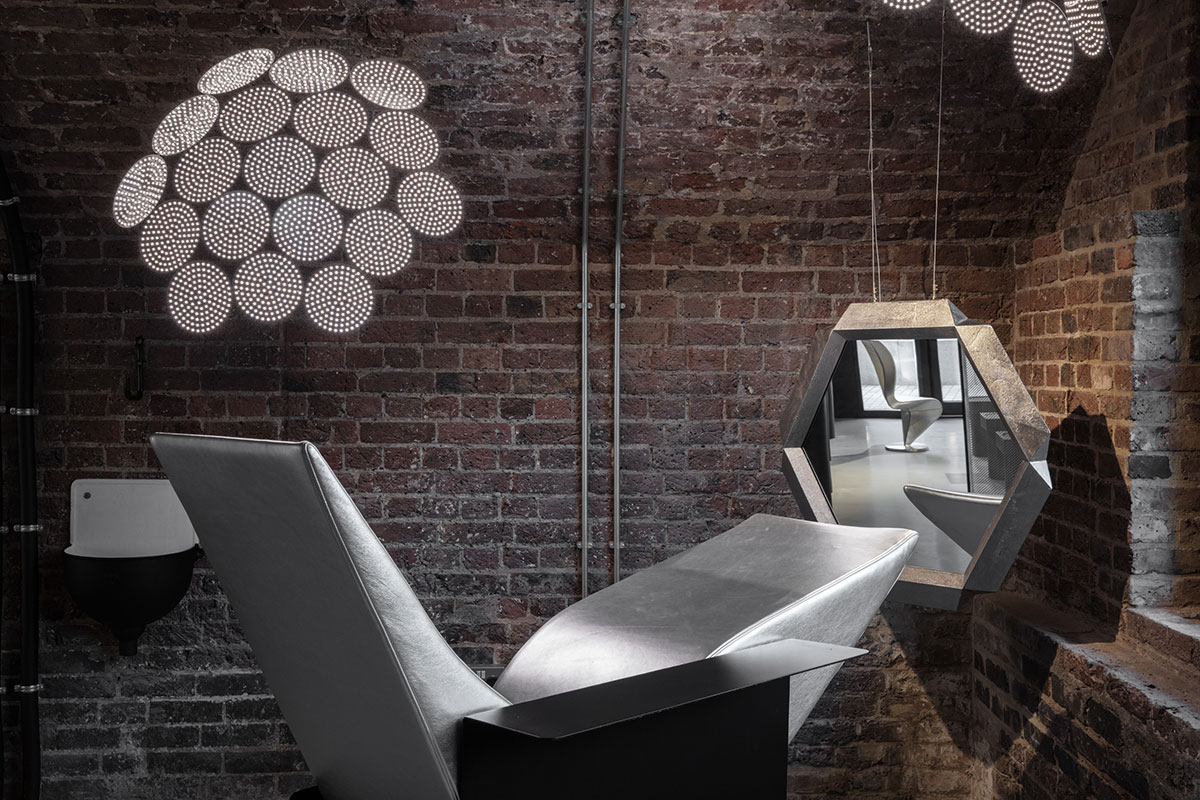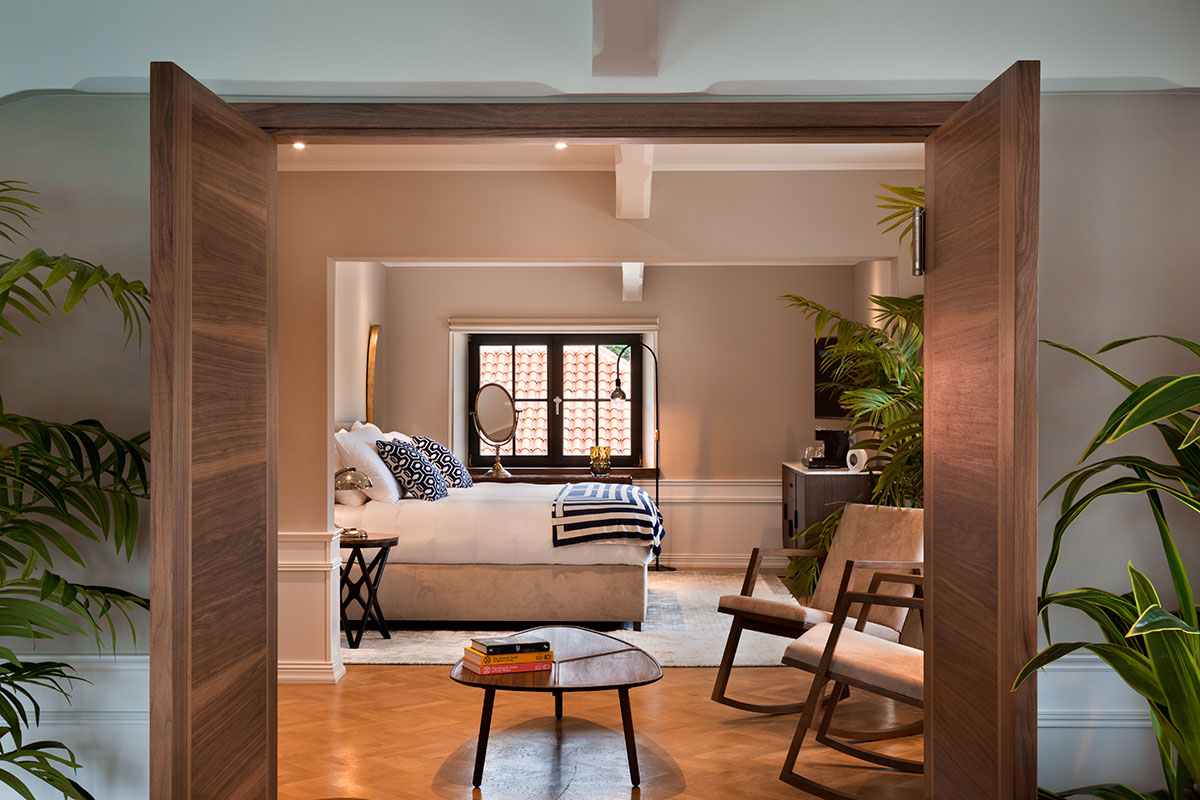
Saar Zafrir Talks About Hotel Elements to Bring Home
Amsterdam-based interior designer Saar Zafrir has designed hotels all over Europe from Provocateur Berlin to Brown Beach House Croatia. It’s always in boutique hotels that traveler feels even more comfortable than at home with their focus on meticulous detail. In fact, it is always the bedroom that we’d love to replicate at home but with clutter and the regular human obsession with sentimental items, our bedrooms are often not the clean haven of dreams. We spoke with the designer to learn more about creating a magical hotel setting in our own homes.
How has your design sense changed working with boutique hotels in Europe?
Boutique Hotels require a great deal of attention to detail, from the overall concept to the interior design, material selection, and furniture design. In order to make them unique, creativity becomes the main player. Normally speaking, a boutique hotel has no branded guidelines/standards as a starting base and therefore the designer needs to get deeply involved in the details in order to create a new essence/feeling/vibe.
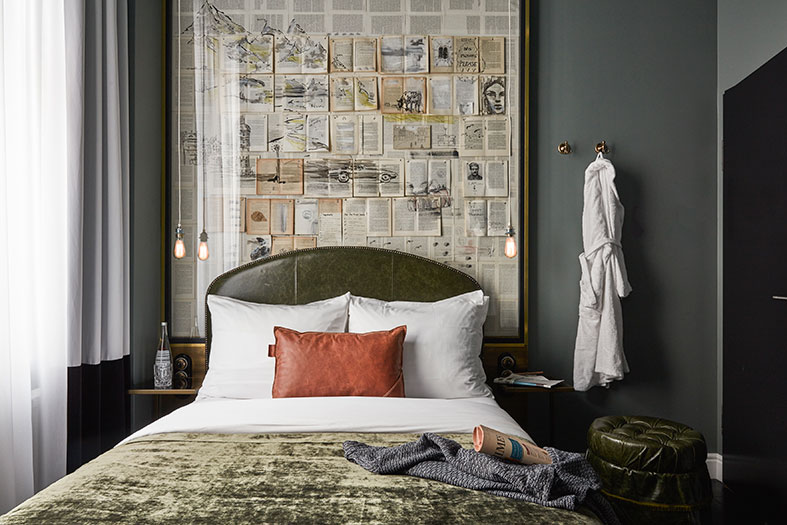
What are some of the most important elements of interior design in a hotel? What do people pay attention to most and don’t even realize that they do so?
The three most important elements in any guest room are the lighting, bathroom, and bed. Lighting is one of the most crucial, yet overlooked elements. The light in one’s bedroom must be strong and encompass the entire space. I recommend adding a light dimmer to adjust a bedroom to serve various functions from morning to night and to allow a warm and soft atmosphere when needed. Bathroom lighting is also very important and needs to be just right to allow guests to get ready, check out their outfit and handle all their grooming needs. Proper and strong water pressure in the shower needs to be ensured as well. In all my design projects, it’s important for me to create a bed so comfortable that the hotel guests will find it very difficult to leave. I usually use Egyptian cotton sheets, a mattress topper is a must and four extremely cosy pillows.
What kind of elements are people afraid to include in their homes but appreciate in hotels?
Home is an everyday location, which is why you shouldn’t go with extreme design. For example, your home shouldn’t be too ‘dark’ / too sexy / too futuristic and so on and forth. Home should be warm, comfortable and practical. Hotels, on the other hand, can be less practical and more daring. In the end, as a guest, you’ll only be spending a few days in it.
Hotel rooms are usually very clean-cut, uncluttered. Is this something that we should try to include in our own homes as well?
While I believe de-cluttering to be beneficial, a home can have a bit more expression and clutter than a hotel room. While a hotel’s design is meant to welcome every type of guest, you can really personalize your home and bedroom to be your own haven. Make your bed every morning before leaving, keep your nightstand clean-cut and incorporate the design elements I mentioned above (lighting and bedding).
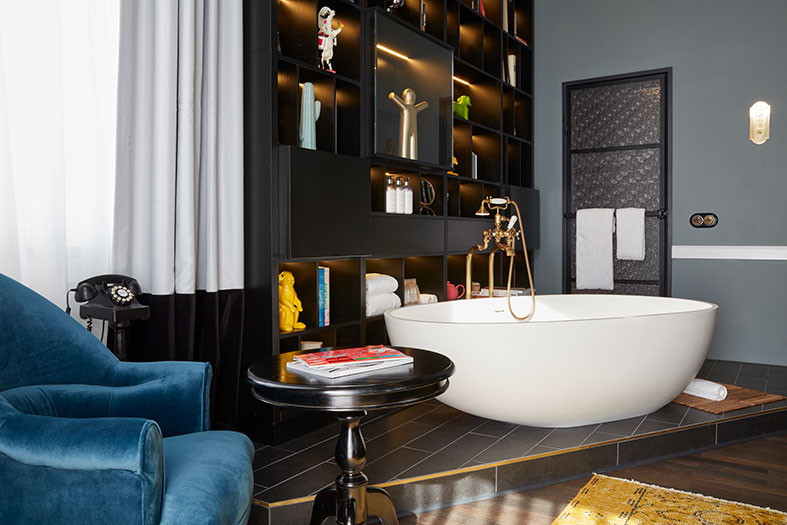
Many of your designs included velvet elements. What other interior design trends have you recently encountered?
Velvet is timeless – I wouldn’t necessarily categorize it as a trend. I love velvet because it’s a very warm fabric. Recently, I have really enjoyed using white/off-white as a recurrent color and mixing it with small details such as books, pillows, and art with warmer colors that bring a room to life and create a cozy feeling.
Finally, what are three things people can do to bring hotel elements into their home?
Adding small decorative details can really make the difference and bring a home to life. For example, I would suggest investing in a great coffee table, curating a selection of books that interest you, adding rugs, decorative pillows to furniture and so forth.





